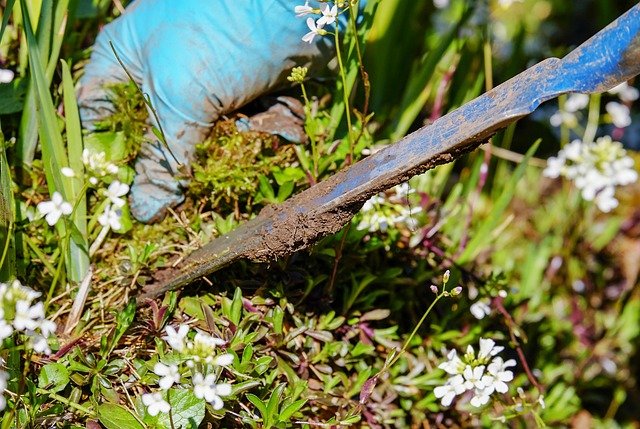The Ultimate Guide to Effective Weed Removal: Techniques for a Pristine Garden
A lush, vibrant garden is a source of pride for any homeowner, but the constant battle against pesky weeds can be frustrating. Weeds compete with your plants for nutrients, water, and sunlight, potentially stunting their growth and compromising the overall health of your garden. Fortunately, there are numerous effective methods to tackle this common gardening challenge. In this comprehensive guide, we'll explore various weed removal techniques, from traditional manual methods to innovative solutions, helping you maintain a weed-free and thriving garden.

-
Chickweed: A small-leaved plant with tiny white flowers
-
Thistle: Characterized by prickly leaves and purple flowers
-
Bindweed: A climbing vine with arrow-shaped leaves and white or pink flowers
Understanding the types of weeds you’re dealing with can help you choose the most effective removal strategies for your specific situation.
How can I manually remove weeds from my garden?
Manual weed removal is often the most environmentally friendly and cost-effective method for maintaining a weed-free garden. Here are some techniques to consider:
-
Hand-pulling: Ideal for small areas or isolated weeds, this method involves grasping the weed at its base and pulling it out, roots and all.
-
Hoeing: Use a hoe to cut weeds off at or just below the soil surface. This method is effective for annual weeds but may not work as well for perennials with deep root systems.
-
Digging: For stubborn weeds with extensive root systems, use a garden fork or shovel to dig around the weed and remove it entirely.
-
Flame weeding: This technique uses a propane torch to apply heat to weeds, causing their cell walls to burst. It’s most effective on young, annual weeds.
What are some effective chemical weed control options?
While manual removal is often preferred, chemical herbicides can be useful for larger infestations or particularly stubborn weeds. When considering chemical options, always follow the manufacturer’s instructions and local regulations:
-
Pre-emergent herbicides: These prevent weed seeds from germinating and are typically applied in early spring.
-
Post-emergent herbicides: These target actively growing weeds and can be selective (targeting specific types of weeds) or non-selective (affecting all plants they contact).
-
Organic herbicides: Made from natural ingredients like vinegar or citrus oils, these offer a more environmentally friendly alternative to synthetic chemicals.
-
Systemic herbicides: These are absorbed by the plant and travel throughout its system, killing it from the roots up.
How can I prevent weeds from growing in my garden?
Prevention is key to maintaining a weed-free garden. Here are some strategies to minimize weed growth:
-
Mulching: Apply a 2-3 inch layer of organic mulch around your plants to suppress weed growth and retain soil moisture.
-
Ground covers: Plant low-growing, spreading plants to cover bare soil and crowd out weeds.
-
Proper spacing: Plant your desired plants close enough together to shade the soil and prevent weed seeds from germinating.
-
Regular maintenance: Remove weeds when they’re small and before they go to seed to prevent future infestations.
-
Soil solarization: Cover moist soil with clear plastic for several weeks during hot weather to kill weed seeds and pathogens.
What are some innovative weed removal tools and techniques?
As gardening technology advances, new tools and techniques for weed removal continue to emerge:
-
Weed torches: These propane-powered devices apply intense heat to weeds, causing them to wilt and die.
-
Weed steamers: Similar to weed torches, these use hot steam to kill weeds without the risk of fire.
-
Electric weed zappers: These tools use electricity to kill weeds through their root systems.
-
Robotic weeders: Autonomous machines that can identify and remove weeds in gardens and lawns.
-
Weed barrier fabrics: Permeable materials that allow water and nutrients to pass through while blocking weed growth.
How can I maintain a healthy lawn to prevent weed growth?
A well-maintained lawn is naturally more resistant to weed infestations. Here are some tips for keeping your lawn healthy and weed-free:
-
Mow at the proper height: Keep grass at the recommended height for your specific grass type to shade out weed seedlings.
-
Water deeply but infrequently: This encourages deep root growth, making your lawn more resilient to weeds and drought.
-
Fertilize appropriately: Proper fertilization helps grass outcompete weeds for nutrients.
-
Overseed: Fill in bare patches with grass seed to prevent weeds from taking hold.
-
Aerate: Regular aeration improves soil structure and reduces compaction, creating a better environment for grass growth.
By implementing a combination of these weed removal and prevention techniques, you can maintain a beautiful, weed-free garden and lawn. Remember that consistency is key – regular maintenance and vigilance will help keep weeds at bay and ensure your outdoor space remains healthy and vibrant throughout the growing season.






